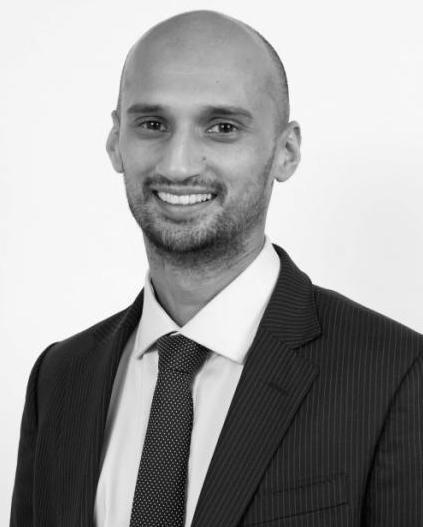Key sports law cases and legal developments of 2015
Tuesday, 12 January 20162015 was arguably one of the busiest years for sports lawyers so far. However, with so much going on we thought we should ask our members of our Advisory and Editorial Board for their choice of key sports case or legal development of 2015.
Given that this is a subjective matter, we would also love to hear what you think is the key sports case or legal development of 2015, so please leave a comment below the article whether you agree or disagree with our Advisory and Editorial Board members.
Here is what our Advisory and Editorial Board members selected:
Mark Hovell, Head of Sport, Mills & Reeve
 The stand out sports law case of the year for me, was Jake Livermore’s doping dispute. In this case a footballer was found with cocaine in his system on game day. In most cases a straight 2 year ban, perhaps 4 years under the new Code, however this case was not like any other. The Panel recognised the specific, tragic circumstances and the level of impairment that affected Jake. Whilst determining that this was a no significant fault case, the Panel felt that even a 12 month ban was too severe and disproportionate and following the often quoted, but rarely applied Puerto decision, reduced the sanction to zero.
The stand out sports law case of the year for me, was Jake Livermore’s doping dispute. In this case a footballer was found with cocaine in his system on game day. In most cases a straight 2 year ban, perhaps 4 years under the new Code, however this case was not like any other. The Panel recognised the specific, tragic circumstances and the level of impairment that affected Jake. Whilst determining that this was a no significant fault case, the Panel felt that even a 12 month ban was too severe and disproportionate and following the often quoted, but rarely applied Puerto decision, reduced the sanction to zero.
Prof. Jack Anderson, Reader in Law, Queen's University Belfast
 One of the more interesting cases from 2015 was GB v Stoke City Football Club Ltd & Anor [2015] EWHC 2862 where allegations were made of bullying and the assault of youth trainees as part of an initiation process or ritual by employees of Stoke City FC in the 1980s. The claimant failed to discharge the burden of proof in his claim. Nevertheless, the trial did raise interesting questions both about the vicarious liability of clubs for abusive treatment of apprentices and the prevalence of “initiation rituals” or hazing in (predominately male) professional sports environments. GB v Stoke in unlikely to be the last word on this matter.
One of the more interesting cases from 2015 was GB v Stoke City Football Club Ltd & Anor [2015] EWHC 2862 where allegations were made of bullying and the assault of youth trainees as part of an initiation process or ritual by employees of Stoke City FC in the 1980s. The claimant failed to discharge the burden of proof in his claim. Nevertheless, the trial did raise interesting questions both about the vicarious liability of clubs for abusive treatment of apprentices and the prevalence of “initiation rituals” or hazing in (predominately male) professional sports environments. GB v Stoke in unlikely to be the last word on this matter.
John Mehrzad, Head of Sports Group, Littleton Chambers
 The legal decision of the year, from my perspective, was the Arbeitsgericht Mainz decision of 25 March 2015 which found that goal-keeper, Heinz Muller, was a permanent employee of Mainz 05 pursuant to EU Directive 1999/70 on fixed-term work. That Directive provides that, save where objectively justified for the purposes of EU law, any employee who has been employed for 4 continuous years either on a single or series of fixed-term contracts automatically becomes a permanent employee. The practical effect of such status in football is that player contracts do not automatically end at the end of their term and those contracts can only be terminated fairly by way of mutual agreement or for fair reasons under each EU Member States’ domestic employment law. Furthermore, save where permitted under domestic employment law (such as by way of agreement or by reason of gross misconduct under UK law), such a player would also be entitled to either contractual or statutory notice pay upon termination. This decision could have a profound impact on player contracts. After Bosman effectively allowed a player to transfer for free at the end of a fixed-term contracts, this decision in many way is a reversal of the Bosman-rule by holding players to their contracts. For many (certainly lower-level) players that could be a good thing as they would be guaranteed a notice payment and, probably, a further termination payment to compromise out any claims if their club wanted to bring the employment relationship to an end.
The legal decision of the year, from my perspective, was the Arbeitsgericht Mainz decision of 25 March 2015 which found that goal-keeper, Heinz Muller, was a permanent employee of Mainz 05 pursuant to EU Directive 1999/70 on fixed-term work. That Directive provides that, save where objectively justified for the purposes of EU law, any employee who has been employed for 4 continuous years either on a single or series of fixed-term contracts automatically becomes a permanent employee. The practical effect of such status in football is that player contracts do not automatically end at the end of their term and those contracts can only be terminated fairly by way of mutual agreement or for fair reasons under each EU Member States’ domestic employment law. Furthermore, save where permitted under domestic employment law (such as by way of agreement or by reason of gross misconduct under UK law), such a player would also be entitled to either contractual or statutory notice pay upon termination. This decision could have a profound impact on player contracts. After Bosman effectively allowed a player to transfer for free at the end of a fixed-term contracts, this decision in many way is a reversal of the Bosman-rule by holding players to their contracts. For many (certainly lower-level) players that could be a good thing as they would be guaranteed a notice payment and, probably, a further termination payment to compromise out any claims if their club wanted to bring the employment relationship to an end.
Daniel Geey, Partner, Sheridans
 The number of contentious matters surrounding third party investment has come as no surprise as a result of the recent FIFA ban. Nonetheless, the FIFA action against Seraing United, Doyen’s victory at CAS against Sporting Lisbon, the Spanish and Portuguese League’s complaint to the European Commission and the recent FC Twente UEFA competition ban shows how third party investment is still very much making the headlines.
The number of contentious matters surrounding third party investment has come as no surprise as a result of the recent FIFA ban. Nonetheless, the FIFA action against Seraing United, Doyen’s victory at CAS against Sporting Lisbon, the Spanish and Portuguese League’s complaint to the European Commission and the recent FC Twente UEFA competition ban shows how third party investment is still very much making the headlines.
Kevin Carpenter, Principal, Captivate Legal and Sport Solutions
 2015 has been a landmark year for rugby union with the Rugby World Cup. An important situation that unfolded during this year in English rugby union was the alleged salary cap breaches in the top-tier Aviva Premiership club competition. The lack of transparency with which this was 'resolved' behind closed doors, by way of "confidential agreements" being reached by certain clubs with Premiership Rugby (the competition organiser), did a disservice to all stakeholders. It also places an asterisk against the competition (and its winners) for that season and leaves supporters with little faith that what they are watching is a 'fair' contest in terms of compliance with the competition rules.
2015 has been a landmark year for rugby union with the Rugby World Cup. An important situation that unfolded during this year in English rugby union was the alleged salary cap breaches in the top-tier Aviva Premiership club competition. The lack of transparency with which this was 'resolved' behind closed doors, by way of "confidential agreements" being reached by certain clubs with Premiership Rugby (the competition organiser), did a disservice to all stakeholders. It also places an asterisk against the competition (and its winners) for that season and leaves supporters with little faith that what they are watching is a 'fair' contest in terms of compliance with the competition rules.
The issue of the salary cap is closely linked to the Rugby Football Union (the governing body in England) extending its policy of not selecting any overseas-based players for the England national team at least until the 2023 Rugby World Cup. This was despite the dismal display of the team at the Rugby World Cup 2015. It also ignores the fact that rugby is now a truly global game with a global employment market for players. Further, the increased rate of injury and concern about player welfare due to the speed and power of the sport at the elite levels means players should have the opportunity to maximise their earning opportunity without the national team sword of Damocles hanging over their heads, not to mention (most importantly for the national team) that the players skill and performance levels appear to improve by playing in a different country's top national competition.
Genevieve Gordon, Principal, Tactic Counsel
 A case of significant importance in 2015 was that of The Football Association v Jake Livermore [2015]. My interest is not necessarily the decision made by not imposing WADA’s rules, based on a redacted statement, more the proportionality of the decision and what in fact will amount to specific circumstances in other sports. We know the case of Armstrong v World Curling Federation resulted in a 6 month suspension. How does proportionality make one incredibly sad life event outcome so much more serious than another? How can another court interpret from legislation and governing rules and precedent follow proportionate decisions in the future when the relevant facts have been largely omitted in the decision to protect privacy? Will the notion of privacy be the achilles heel of proportionate decisions in the future?
A case of significant importance in 2015 was that of The Football Association v Jake Livermore [2015]. My interest is not necessarily the decision made by not imposing WADA’s rules, based on a redacted statement, more the proportionality of the decision and what in fact will amount to specific circumstances in other sports. We know the case of Armstrong v World Curling Federation resulted in a 6 month suspension. How does proportionality make one incredibly sad life event outcome so much more serious than another? How can another court interpret from legislation and governing rules and precedent follow proportionate decisions in the future when the relevant facts have been largely omitted in the decision to protect privacy? Will the notion of privacy be the achilles heel of proportionate decisions in the future?
Andrew Nixon, Head of Sports Group, Sheridans
 For me, the Pechstein ruling. The idea that imposed arbitration clauses may be anti-competitive is interesting, but the real issue related to the CAS and its institutional set-up, and the concept that the Sports Governing Bodies have a decisive influence on who may be called as an arbitrator. Clearly, arbitration remains the central forum for resolving sports disputes and that will remain the case: that is a good thing and everyone recognises the benefits of this. The CAS must however look inwardly to retain its position as the highest sporting tribunal.
For me, the Pechstein ruling. The idea that imposed arbitration clauses may be anti-competitive is interesting, but the real issue related to the CAS and its institutional set-up, and the concept that the Sports Governing Bodies have a decisive influence on who may be called as an arbitrator. Clearly, arbitration remains the central forum for resolving sports disputes and that will remain the case: that is a good thing and everyone recognises the benefits of this. The CAS must however look inwardly to retain its position as the highest sporting tribunal.
Nina Goolamali, Head of Sports Group, 2 Temple Gardens
 Whilst the FIFA corruption crisis erupted in May 2015 and is unlikely to fade from the spotlight in 2016, another issue which has emerged this year is the increasingly difficult role of medical professionals within professional sport.
Whilst the FIFA corruption crisis erupted in May 2015 and is unlikely to fade from the spotlight in 2016, another issue which has emerged this year is the increasingly difficult role of medical professionals within professional sport.
Eva Carneiro’s well publicised attempt to treat Eden Hazard during injury-time of the 2-2 draw against Swansea at Stamford Bridge on 8th August 2015 has resulted in her bringing a constructive dismissal claim against Chelsea Football Club. This litigation is likely to reinforce the cardinal principle that medical professionals must be free to exercise their independent and expert judgment when treating players without coercion or penalty.
Another important case testing the standard of care required by medical professionals in professional sport is the High Court decision in Radwan Hamed (a protected party) v Tottenham Hotspur Football Club & Ors [2015] EWHC 298 (QB). This professional negligence claim arose out of medical treatment and advice given to an academy player where his underlying cardiac disease was missed by the club doctor (even though clearly indicated by a Cardiologist’s opinion). The Club owed a duty of care to Mr Hamed as a result of both their doctor/patient relationship and their employer/employee relationship. The Court found that this duty had been breached. Radwan Hamed had been assessed as fit to play but only 3 days after being signed by the Club suffered a cardiac arrest in a match which led to catastrophic brain damage.
Professor Mark James, Professor of Sports Law, Manchester Law School.
 Pechstein has the potential to be one of the most important sports law cases of all time. Although the German courts have stopped short of declaring forced arbitration clauses to be illegal per se, the eventual outcome of the Pechstein’s appeal will almost undoubtedly lead to changes in the way that arbitrators are appointed to CAS panels. This in turn could lead to changes being required to the appointment processes of other disciplinary panels that fall short of the requirements imposed on CAS. The decision of the Federal Court of Justice should pave the way for a further modernisation of CAS and its procedures.
Pechstein has the potential to be one of the most important sports law cases of all time. Although the German courts have stopped short of declaring forced arbitration clauses to be illegal per se, the eventual outcome of the Pechstein’s appeal will almost undoubtedly lead to changes in the way that arbitrators are appointed to CAS panels. This in turn could lead to changes being required to the appointment processes of other disciplinary panels that fall short of the requirements imposed on CAS. The decision of the Federal Court of Justice should pave the way for a further modernisation of CAS and its procedures.
Alex Kelham, Managing Associate & Head of Sports Group, Lewis Silkin
 In 2012, Rule 40 of the Olympic Charter was subject to an athlete-led twitter campaign “#wedemandchange” during the London Olympics. The IOC did take note and in February 2015 indicated that it would be relaxing the rule which prevents athletes from allowing their name, image or sporting performance to be used in advertising during the ‘blackout period’ without permission of the IOC. (This period runs from about 10 days before the opening ceremony until the close of the Games). In fact the IOC has permitted National Olympic Committees to take a country-by-country approach, provided that “Olympic themed” advertising featuring athletes remains banned. It appears that some countries are relaxing the rules completely, while others are not at all. A middle ground has been taken by major NOCs – eg in the US, Canada and GB, the NOCs are essentially allowing some advertising which has been running for long periods, is completely unrelated to the Olympics, and would have continued to run irrespective of the Games, to continue in the same fashion.
In 2012, Rule 40 of the Olympic Charter was subject to an athlete-led twitter campaign “#wedemandchange” during the London Olympics. The IOC did take note and in February 2015 indicated that it would be relaxing the rule which prevents athletes from allowing their name, image or sporting performance to be used in advertising during the ‘blackout period’ without permission of the IOC. (This period runs from about 10 days before the opening ceremony until the close of the Games). In fact the IOC has permitted National Olympic Committees to take a country-by-country approach, provided that “Olympic themed” advertising featuring athletes remains banned. It appears that some countries are relaxing the rules completely, while others are not at all. A middle ground has been taken by major NOCs – eg in the US, Canada and GB, the NOCs are essentially allowing some advertising which has been running for long periods, is completely unrelated to the Olympics, and would have continued to run irrespective of the Games, to continue in the same fashion.
Vijay Parbat, Head of Legal, UK Sport
 I have two key cases of 2015. My first is the decision of the Court of Justice of the European Union on 6 October 2015 in Maximillian Schrems v Data Protection Commissioner of Ireland C-132/14 which declared that transfer of personal data by Facebook Ireland Limited to its parent company in the U.S. under the European Commission’s Safe Harbour Decision as being invalid. Many sports organisations may have placed reliance this legal mechanism (note there are other legal mechanisms regarding transferring personal data such as model clauses, binding corporate rules, self-assessment of adequacy and consent) to transfer personal data when using online service providers and use of cloud services to provide them with various sports performance and business related services. The decision now means that sports organisations need to check their arrangements with their suppliers and in some instances their sponsors/commercial partners. Sports lawyers dealing with personal data matters will also be aware of the new General Data Protection Regulations 2015. The wording of these new regulations has now been agreed between the EU Commission, Parliament and Council of Ministers and two years from the date of publication in the Official Journal will be in force. These regulations are a game changer.
I have two key cases of 2015. My first is the decision of the Court of Justice of the European Union on 6 October 2015 in Maximillian Schrems v Data Protection Commissioner of Ireland C-132/14 which declared that transfer of personal data by Facebook Ireland Limited to its parent company in the U.S. under the European Commission’s Safe Harbour Decision as being invalid. Many sports organisations may have placed reliance this legal mechanism (note there are other legal mechanisms regarding transferring personal data such as model clauses, binding corporate rules, self-assessment of adequacy and consent) to transfer personal data when using online service providers and use of cloud services to provide them with various sports performance and business related services. The decision now means that sports organisations need to check their arrangements with their suppliers and in some instances their sponsors/commercial partners. Sports lawyers dealing with personal data matters will also be aware of the new General Data Protection Regulations 2015. The wording of these new regulations has now been agreed between the EU Commission, Parliament and Council of Ministers and two years from the date of publication in the Official Journal will be in force. These regulations are a game changer.
My second is the well commented upon case of Claudia Pechstein and her challenge against the CAS award against her. Whilst Pechstein’s challenge is about jurisdiction, at a basic and more fundamental I feel this case, and the first case I mentioned, is about consent. It is my personal view that athlete’s will increasingly raise the issue of consent whether in against activities, whether they be regulatory, governance or commercially related, which sports organisations may have previously taken for granted and assumed consent is in place for.
Jon Walters, Partner, Charles Russell Speechlys
 Not one case, but a number of cases in both the USA and UK indicating that the use of image was one of the most litigated areas of 2015. In the UK, we had the Court of Appeal upholding Rihanna’s passing off claim against Topshop for use of her image on a t-shirt. Will this prove to be a decision of limited impact made based on specific circumstances or the first step to the wider acceptance of image rights protection in the UK? And in the USA, there have been important decisions concerning the rights afforded to former National Collegiate Athletic Association athletes (e.g. O’Bannon; Keller). The trend seems to be towards increasing assertiveness and recognition of individual image / personality rights and will need to be monitored by teams, event organisers and businesses exploiting athlete images alike.
Not one case, but a number of cases in both the USA and UK indicating that the use of image was one of the most litigated areas of 2015. In the UK, we had the Court of Appeal upholding Rihanna’s passing off claim against Topshop for use of her image on a t-shirt. Will this prove to be a decision of limited impact made based on specific circumstances or the first step to the wider acceptance of image rights protection in the UK? And in the USA, there have been important decisions concerning the rights afforded to former National Collegiate Athletic Association athletes (e.g. O’Bannon; Keller). The trend seems to be towards increasing assertiveness and recognition of individual image / personality rights and will need to be monitored by teams, event organisers and businesses exploiting athlete images alike.
Ariel Reck, Sports Lawyer (Argentina)
The key case in 2015 was in my opinion the “FIFA-GATE”. The action started by the United State Department of Justice with several arrests made just before the FIFA General Congress (which included the presidential election). Such action triggered also further actions from Swiss authorities and also boosted a claim in Uruguay against Conmebol officials. At internal level, the case triggered actions by the Ethics Committee sanctioning and suspending of several official, including the President and the Secretary General and the UEFA president (at that time running for FIFA presidency) Platini.
Benoit Keane, Principal, Keane Legal
 There was an important development in the Financial Fair Play (FFP) case when the Brussels Court of First Instance rejected the claims being made by the football agent Daniele Striani for lack of jurisdiction, finding that an agent is “doubly indirectly affected” by the FFP rules which apply in the first instance to clubs and then indirectly to players. Shortly afterwards, the European Court of Justice rejected the reference made to it on the basis that it was manifestly inadmissible. The European Court of Justice clarified that it was not sufficient for there to be a debate between the parties, the national court must show why a reference is needed to resolve the legal dispute before it. This means that purely theoretical claims concerning the legality of sports rules under EU law should not form the basis of a reference to the European Court of Justice.
There was an important development in the Financial Fair Play (FFP) case when the Brussels Court of First Instance rejected the claims being made by the football agent Daniele Striani for lack of jurisdiction, finding that an agent is “doubly indirectly affected” by the FFP rules which apply in the first instance to clubs and then indirectly to players. Shortly afterwards, the European Court of Justice rejected the reference made to it on the basis that it was manifestly inadmissible. The European Court of Justice clarified that it was not sufficient for there to be a debate between the parties, the national court must show why a reference is needed to resolve the legal dispute before it. This means that purely theoretical claims concerning the legality of sports rules under EU law should not form the basis of a reference to the European Court of Justice.
Nick De Marco, Barrister, Blackstone Chambers
 2015 will probably go down as a year of disgrace for sport due to the revelations of widespread and institutional corruption within two of the world’s largest sports governing bodies, FIFA and the IAAF. The criminal investigations, disciplinary hearings and investigative reports make up the most important ‘cases’ in sports law in 2015. My other two highlights are the Pechstein case, where a German Federal Court struck down an arbitration clause providing CAS with jurisdiction because of the imbalance in CAS against athletes and the Jake Livermore case before the FA that I was involved in, in which, for the first time, an athlete was able to rely on the proportionality principle to reduce the mandatory sanction for No Significant Fault from one year to zero because of exceptional circumstances.
2015 will probably go down as a year of disgrace for sport due to the revelations of widespread and institutional corruption within two of the world’s largest sports governing bodies, FIFA and the IAAF. The criminal investigations, disciplinary hearings and investigative reports make up the most important ‘cases’ in sports law in 2015. My other two highlights are the Pechstein case, where a German Federal Court struck down an arbitration clause providing CAS with jurisdiction because of the imbalance in CAS against athletes and the Jake Livermore case before the FA that I was involved in, in which, for the first time, an athlete was able to rely on the proportionality principle to reduce the mandatory sanction for No Significant Fault from one year to zero because of exceptional circumstances.
Andrew Smith, Barrister, Matrix Chambers
 The decision of the Court of Arbitration for Sport in the case of Dutee Chand v IAAF was a highly significant one, involving complicated issues of science, legal principle and human rights; and what is really meant by the notion of ‘fair competition’ in sport.
The decision of the Court of Arbitration for Sport in the case of Dutee Chand v IAAF was a highly significant one, involving complicated issues of science, legal principle and human rights; and what is really meant by the notion of ‘fair competition’ in sport.
John Wolohan, Professor, David B. Falk College of Sport and Human Dynamics at Syracuse University
 In 2015 the key issue was not just one case but two different cases involving college athletics. The first case, was the Northwestern University and College Athletes Players Association (CAPA), Case 13–RC– 121359 August 17, 2015, in which the National Labor Relations Board refused to decide whether college athletes were employees of their universities. While the NLRB acknowledged all the time the players put into their sports and all the control the schools had over them, it claimed that it did not have jurisdiction to decide the issues in the case and that the issue was better off addressed by the United States Congress or the NCAA (the group with the greatest interest in keeping the system unchanged).
In 2015 the key issue was not just one case but two different cases involving college athletics. The first case, was the Northwestern University and College Athletes Players Association (CAPA), Case 13–RC– 121359 August 17, 2015, in which the National Labor Relations Board refused to decide whether college athletes were employees of their universities. While the NLRB acknowledged all the time the players put into their sports and all the control the schools had over them, it claimed that it did not have jurisdiction to decide the issues in the case and that the issue was better off addressed by the United States Congress or the NCAA (the group with the greatest interest in keeping the system unchanged).
The second case of 2015 dealing with college athletics was the Ninth Circuit Federal Court of Appeal’s disappointing decision in O'Bannon v. NCAA, 802 F.3d 1049 (9th Cir. 2015). Based on the lower court’s decision, most legal commentators were expecting the Ninth Circuit Court to give college athletes a major victory in the fight for greater rights and a share in the billion dollar college sport industry. Instead, while the court found that the NCAA and the colleges and universities were in violation of the Federal Antitrust laws, it actually vacated the $5,000 a year award to the players and found in favor of the NCAA, holding that the current system of restraints was reasonable.|
Taken together, these decision dealt a big blow to college athletes in their fight for greater rights. The fight, however, is not over. O’Bannon can still appeal to the Supreme Court and other challenges are slowly working their way through the courts. In addition, to stop the flood of litigation, the NCAA and the five major conferences in 2015 started to provide the athletes with an extra $2,000 in cash and other benefits.
Sean Corbett, Brand Protection Manager, Formula One Management Ltd
 Away from Deflategate, O Bannon and all things FIFA, in July 2015 a Federal Judge affirmed an earlier decision of the Trademark Trial and Appeal Board (TTAB) to cancel the Washington Redskin’s trademark registrations on their controversial name and dismissed the team’s defense that the federal ban on offensive marks was unconstitutional concluding that a trade mark registration is “government speech” and thus not subject to scrutiny of the First Amendment. Look out for more on this in 2016 following a decision in another case (Tam, case number 14-1203) addressing similar issues which concluded that S.2(a) was an “unconstitutional penalty on free speech” and regardless of public opinion on the disparaging nature of the Redskins name, or otherwise, the First Amendment versus Disparaging Marks certainly received its fair share of media coverage.
Away from Deflategate, O Bannon and all things FIFA, in July 2015 a Federal Judge affirmed an earlier decision of the Trademark Trial and Appeal Board (TTAB) to cancel the Washington Redskin’s trademark registrations on their controversial name and dismissed the team’s defense that the federal ban on offensive marks was unconstitutional concluding that a trade mark registration is “government speech” and thus not subject to scrutiny of the First Amendment. Look out for more on this in 2016 following a decision in another case (Tam, case number 14-1203) addressing similar issues which concluded that S.2(a) was an “unconstitutional penalty on free speech” and regardless of public opinion on the disparaging nature of the Redskins name, or otherwise, the First Amendment versus Disparaging Marks certainly received its fair share of media coverage.
Alfonso Valero, Principal Lecturer, Nottingham Law School
 My choice would be Vanessa Vanakorn vs FIS (CAS 2014/A/3832 and CAS 2014/A/3833), a case involving a number of very topical issues: nationality chosen to compete, classification and burden of proof. In this case, the CAS considered that in spite of the fact that a number of officials had been sanctioned for irregularities during a competition, and accepting that that competition had been organised for the benefit and to suit the needs of a competitor - Vanessa Vanakorn - there was not sufficient evidence to consider her involved in the irregularities.
My choice would be Vanessa Vanakorn vs FIS (CAS 2014/A/3832 and CAS 2014/A/3833), a case involving a number of very topical issues: nationality chosen to compete, classification and burden of proof. In this case, the CAS considered that in spite of the fact that a number of officials had been sanctioned for irregularities during a competition, and accepting that that competition had been organised for the benefit and to suit the needs of a competitor - Vanessa Vanakorn - there was not sufficient evidence to consider her involved in the irregularities.
The standard of proof was considered comfortable satisfaction, normally used by CAS in disciplinary cases. However, it was more surprising that the CAS considered that the appellant was not necessarily involved in the proven irregularities, but rather just deriving a benefit from it. Additionally, the award was a blow to the flexible system of competitions ad hoc allowed by the Federation.
- 2015 Rugby World Cup 2023 Rugby World Cup Anti-Corruption Anti-Doping College Athletes Players Association (CAPA) Court of Arbitration for Sport (CAS) European Commission European Commission’s Safe Harbour Decision FIFA Financial Fair Play Football Germany Governance Hyperandrogenism Ice Skating Image Rights International Association of Athletics Federations (IAAF) International Skiing Federation (FIS) IOC National Collegiate Athletic Association (NCAA) Olympic Paralympics Premiership Rugby Regulation Rugby Skiing The FA Trademark Trial and Appeal Board (TTAB) UEFA United Kingdom (UK) United States of America (USA) World Anti-Doping Agency (WADA) World Anti-Doping Code (WADC)







